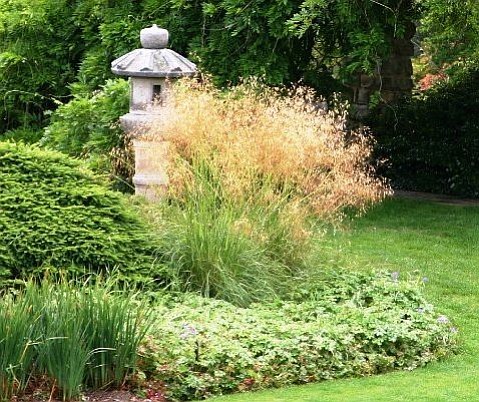I spend most of my time in the garden doing seasonal chores.
In my garden journal, I keep a list of annual and seasonal tasks that need to be done in the garden throughout the year. At the beginning of each month, I refer to the tasks recommended for that specific month. In addition, I am always revising a personal, ever-changing list of jobs specific to my own garden.
While working, gardeners tend to see their gardens through a series of scheduled jobs. We concentrate on a particular task such as weeding, mowing the lawn or adding mulch to beds and borders. We catalog details. When I am deadheading spent flower heads or weeding garden beds, my goal is near-sighted. I want to get the job done.
When prepping the garden for an event, say friends coming over for dinner or a garden visit from an out of state friend, our entire perspective changes. Since most of us have spent time visiting other gardens, we know that the first thing a visitor sees is the overall garden picture. When visiting another garden, our first impression is often an emotional reaction.
Once the initial impact of entering a garden subsides, our focus begins to narrow. A well-planned garden offers comprehensive vignettes within the larger picture. We don’t want the visitor to see everything at once but we do want the visitor to always have something to see. Pathways encourage us to move through the garden. The longer one remains in one place, the more microscopic one’s vision will become.
The big picture
This concept of starting with the big picture and working down to details is one that every gardener can use to create interest in their own garden.
For year-round interest, I review my garden with each passing season. Whether you are starting a garden from scratch or have been in the same garden for many years, the overall structure should be the first consideration.
This includes hardscape features such as patios, porches, walls and pathways, as well as large plantings such as trees, shrubs and hedging materials.
Flowering perennials and annuals are usually seen as blocks of color in the garden. They serve as wonderful one- or two-season accents, but the persistent backdrop of a magnificent yew hedge or the impressive Shasta viburnum (V. plicatum tomentosum) will hold the picture together throughout the garden year.
Make a note in your garden journal to plant summer blooming bulbs in containers next year at about the time that spring blooming bulbs have faded back. Dahlias, gladiolas and the exotic pineapple lily (Eucomis) are a few that do well in pots. Allium Globemaster is spectacular in a glazed ceramic planter.
I experiment with combining plants of different texture, color and shape to see which characteristics bring out the best in other plants. The exotic canna lilies, especially those with richly marbled leaf patterns, can certainly stand alone in a large planter. Plant a few simple terra cotta pots with scented Oriental lilies. Move them around the garden to fill empty spaces with color in the late summer garden.
Let your heart show
My stepdad and I enjoy working with each other on house and garden projects during our mutual visits. On one visit he helped me put up an antique iron arbor. Another year he laid a drip line to every shrub in the hydrangea garden. I’m excited to see his reaction when he spots the mosquito net hanging over the hammock that stretches between two Douglas firs in the shade garden. Now his favorite napping spot will be bug free.
In the morning and sometimes in the evening, too, I make a complete tour of the garden with a note pad and write down specific jobs to do. Through the day, as I am working, I jot down any additional garden tasks that come to mind. Tomorrow I will weed and edge the rose beds and transplant the low, ground hugging lambs ear, Stachys byzantina that grows so well throughout my garden.
One of the first things I do when visiting another garden is to try to get a feel for the garden. Depending on how well I know the garden owner, I typically look for signs of personality that I might recognize in the garden design and in the garden furnishings. It’s good to keep this in mind when you are home working in your own garden. Let your heart show through the work you do. Visitors will appreciate your efforts.
Robb Rosser is a WSU-certified Master Gardener. Reach him at Write2Robb@aol.com.



